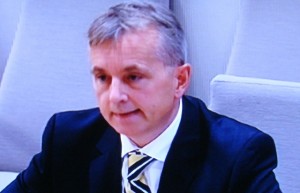For the first time in years, there was plenty of Norwegian lamb available in the stores this Easter and at relatively reasonable prices. Farm production is higher than ever, but farmers and their advocates remain dissatisfied and the government’s plans for more reforms face constant challenge.

Agriculture Minister Jon Georg Dale of the conservative Progress Party rolled out his latest updated plans for the farming industry just before the Easter holiday week began. Opposition politicians claimed it was a watered-down version of more sweeping reforms aimed at generating greater economies of scale in Norway and lower food prices for consumers. Dale, however, denied charges from his opponents that it was all “one big belly flop” after months of negotiations and compromise with the government coalition’s two small support parties, the Christian Democrats and the Liberals. They generally continue to support Norway’s heavily regulated farming industry and keep it protected from free market forces.
“We have a majority for important proposals that will contribute towards creating more future-oriented agriculture,” Dale told news bureau NTB.
He was pleased that the Parliament’s committee on business and trade was in favour of setting goals for increased food production. Lamb and pork are already being produced on a bigger scale, so big that it led to a relative oversupply this past winter that prompted the country’s biggest meat coop and so-called market regulator Gilde to freeze most of it away to prevent any glut from lowering prices. Pressure from consumer groups and new purchasing deals by grocery retailer REMA 1000 recently contributed to a thaw that sent more of the meat to market at prices less than half what they were in January (around NOK 400 per kilo, or USD 45 per pound).

Dale’s new proposed reforms aimed at boosting food production also involve a reduction in the number of so-called “milk regions” around the country that are designated for dairy farming, along with some new deregulation of the pork market and changes in revenue goals.
Dale was also pleased that the committee went along with removing a goal that called for production and consumption to be at least 15 percent ecological. He was asked, however, to return with a new goal for ecological production, over the objections of his own party and the Conservatives that lead the government coalition.
Reducing Norway’s dairy regions from 18 to 14 will provide more flexibility and economic efficiencies, Dale believes, by relieving dairy cooperative Tine, for example, of having to send milk trucks into remote areas where milk production is low. Dale, however, wanted to eliminate more regions while the opposition Labour, Center and Socialist Left parties didn’t want any reductions. The Center Party, which champions rural and farmers’ interests, is known for resisting most all agricultural reforms in its ongoing drive to maintain farmers’ subsidies and keep protecting them from foreign competition.
“Fewer and bigger regions,” Dale argued, “will also lead to more well-functioning markets and more equal development opportunities for all dairy farmers.”

Labour’s spokesman for agricultural policy, Knut Storberget, claimed the party was glad that a majority on the committee limited the reduction in milk regions (Dale had wanted only 10). Storberget, a former justice minister from Hedmark County who now is promoting farmers’ interests, also claimed that other compromises halted some of Dale’s reforms.
Both sides ended up claiming victories ahead of the annual negotiations over farm subsidies and tariff protection. While Dale’s colleagues in the Progress Party believe agriculture policy in Norway is now more consumer-oriented instead of mostly benefiting the farmers themselves, opposition parties won assurances that farmers will get another rise in income and that many small- and medium-sized farms have been saved.
“I am absolutely certain that we need small, medium and large farming operations in Norway, in order to meet ambitious production goals and preserve farming nationwide,” Line Henriette Hjemdal of the Christian Democrats told NTB. The government also lost its effort to push through reforms of various welfare programs for farmers.
“Dale put forth a recipe for liberalizing and centralizing Norwegian agriculture policy,” said Geir Pollestad, a Member of Parliament for the Center Party. “Now the Parliament has stopped him from doing that.” Not entirely, countered Dale.
“It’s important to remember that increased productivity is important, also in agriculture,” Dale said in Parliament, with a touch of irony. Political commentator Kjetil B Alstadheim in newspaper Dagens Næringsliv (DN) seemed to agree, making fun of Storberget’s complaint that there now are fewer jobs in agriculture despite the rise in food production.
“Just think how many jobs we could create in agriculture if we did away with milking machines and tractors,” Alstadheim wrote in DN after Dale presented his reform package. “That could lead to a new slogan for Labour (and the Center Party, which hope to form a new government coalition after the fall election): ‘Hoes and buckets for everyone!'”
newsinenglish.no/Nina Berglund

